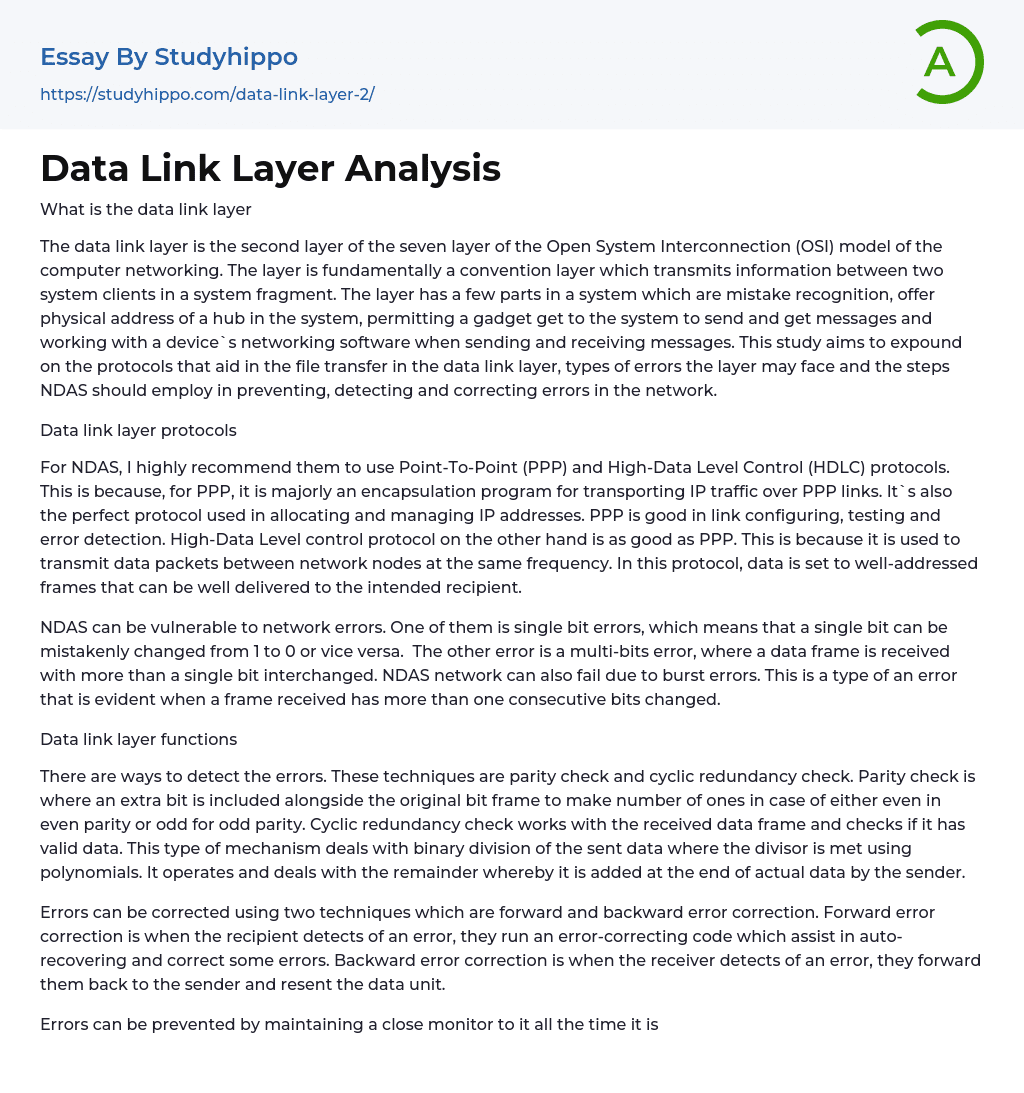The data link layer in the OSI model
The data link layer is the second layer of the seven-layer OSI model. It acts as a protocol layer enabling information exchange between two system clients in a network segment.
The layer has multiple components within a system, including mistake recognition, providing a physical address for a hub in the system, allowing a device to access the network for sending and receiving messages, and working with a device's networking software during message transmission. This study focuses on the protocols that help with file transfer in the data link layer, the types of errors the layer may encounter, and the steps NDAS should take to prevent, detect, and correct errors in the network.
Data link layer protocols
For NDAS, it is highly recommended to use Point-To-Point (PPP) and High-Data Level Control (HDLC
...) protocols. PPP is primarily an encapsulation program used for transporting IP traffic over PPP links and is ideal for managing IP addresses. It also excels in link configuration, testing, and error detection. Similarly, HDLC is an effective protocol comparable to PPP.
The reason for using NDAS is to transmit data packets between network nodes using the same frequency. This protocol involves setting data to well-addressed frames for reliable delivery to the intended recipient. However, NDAS is susceptible to network errors. One such error is single bit errors, where a single bit can be mistakenly changed from 1 to 0 or vice versa. Another error is multi-bits error, which occurs when a data frame is received with more than one bit interchanged.
NDAS network can experience a failure caused by burst errors, which occur when consecutive bits in a received frame ar
changed.
Data link layer functions
There are methods available for error detection, including parity check and cyclic redundancy check. Parity check involves adding an extra bit to the original bit frame to ensure the total number of ones is either even for even parity or odd for odd parity.
Cyclic redundancy check is a mechanism that verifies the validity of the received data frame. This mechanism utilizes binary division with polynomials to determine the divisor. The remainder obtained from the division is then appended to the original data by the sender. Two techniques for error correction are employed: forward error correction and backward error correction. In forward error correction, the recipient detects errors and utilizes an error-correcting code to automatically recover and correct some errors. On the other hand, backward error correction involves the receiver signaling the sender about detected errors and requesting a resend of the data unit.
Errors can be avoided by consistently monitoring them and addressing them promptly. It is important for the experts who developed the network to anticipate errors and have a contingency plan in place.
- Telecommunication essays
- Network Topology essays
- Telecommunications essays
- Electronics essays
- Computer Science essays
- Consumer Electronics essays
- Enterprise Technology essays
- Hardware essays
- Robot essays
- engineering essays
- people search essays
- Modern Technology essays
- Impact of Technology essays
- Cloud Computing essays
- Operating Systems essays
- Information Technology essays
- Data Analysis essays
- Information Age essays
- Smartphone essays
- Cell Phones essays
- Camera essays
- Computer essays
- Ipod essays
- Mobile Phones essays
- 3g essays
- Bluetooth essays
- Cell Phones in School essays
- Computer File essays
- Desktop Computer essays
- Servers essays
- Data collection essays
- Graphic Design essays
- Data Mining essays
- Cryptography essays
- Internet essays
- Network Security essays
- Android essays
- Computer Security essays
- World Wide Web essays
- Website essays
- Computer Network essays
- Application Software essays
- Computer Programming essays
- Computer Software essays
- Benchmark essays
- Information Systems essays
- Email essays
- Hypertext Transfer Protocol essays
- Marshall Mcluhan essays
- Virtual Learning Environment essays




